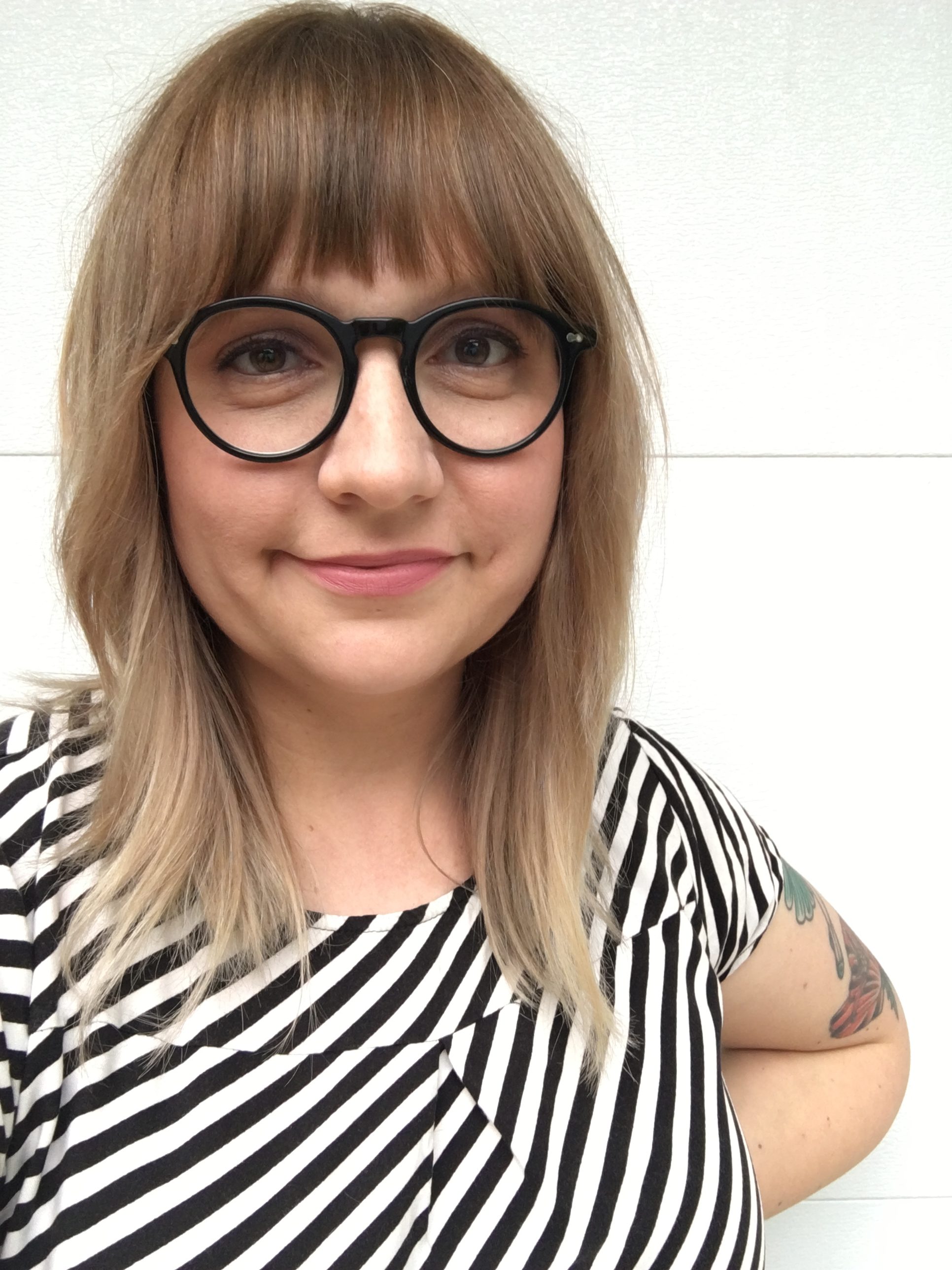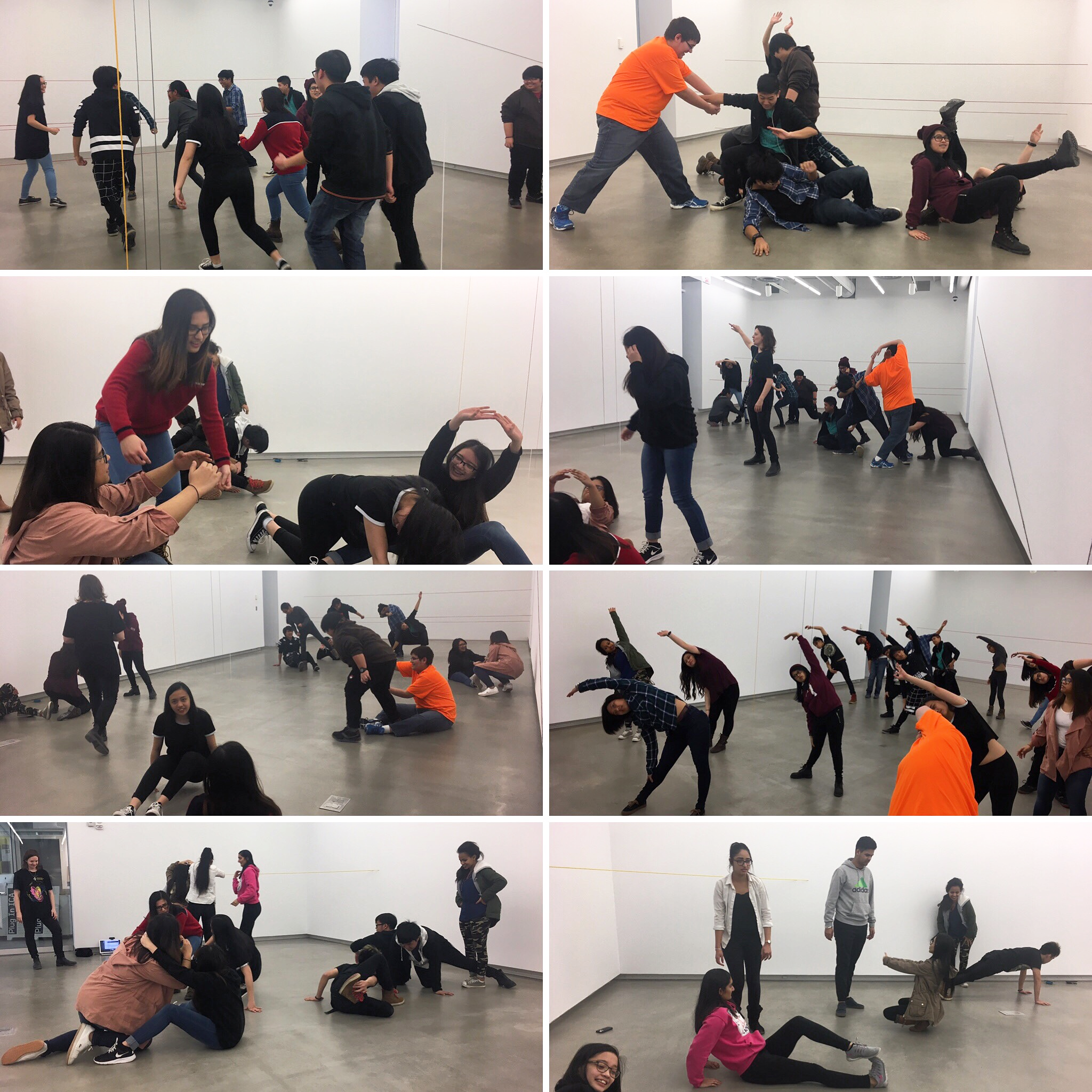
Courtesy of Stacey Abramson.
Stacey Abramson joins us on the magazine as the second Educator-in-Residence for our July / August issue, “Inspired by a True Story.” The issue investigates the line separating truth and fiction in both contemporary art and documentary film projects. Abramson is herself a video artist, as well as a writer and visual arts educator at Maples Collegiate in Winnipeg, Canada. She joined the Art21 Educators program last year, participating in the Year 6 cohort.
Art21: Why do you believe the thinking and practices of contemporary artists are important to incorporate in the classroom? What do students get out of it that they might not otherwise?
Stacey Abramson: Contemporary art is a critical lens for understanding ourselves and the world. It is responsive to the time and reflects the motions and rifts in society. When I ask new students who their favorite artist is, they often cannot think of one or list Picasso or Van Gogh. It’s the same issue when it comes to what students think art is without contemporary art and pedagogy: realistic pencil-rendered portraits. Art education has historically explored technique and expression without questioning the rich layering of history that contemporary art and practices offer and explore. I’ve used the analogy of teaching science with a textbook from the nineteenth century to explain why we need to bring contemporary art into not only the art room, but all classes.
What happens when you show students artists who look like them? Artists who think like them? What happens when you show them artists who experiment, take risks and learn through failure? It’s time for a revolution in art education. (I wrote a manifesto on contemporary art education as part of my work in the Art21 Educators program this year to try to bring to light some of these issues.)
The students in our classrooms today have new ways of communicating with and understanding the world around them that are rapidly changing. They are witnesses to the power of art for change through the work of artists like Theaster Gates, Carrie Mae Weems, Doris Salcedo and Alfredo Jaar, and this in turn invites them to think about what art is capable of in their own lives. How do they make meaning of their place? How can they make a mark or a difference in themselves, their community—both local and global? Using contemporary art in my classroom allows my students to see not only themselves in the reflection of artworks, but also shows them the potential for their own growth as an artist and individual. Many of the students at my school do not go on to art school, which is why it’s important to teach the investigations, reclamation and possibilities for new understandings that contemporary art offers.
Art21: Why were you initially drawn to the Art21 Educators program?
SA: I had always been a fan of Art21 since my time in art school in the early ’00s and had made the films a part of my teaching when I first started in the classroom. A colleague here in Winnipeg told me about the program and I was thrilled to know it existed. I happened to be going to the National Art Education Association conference in New Orleans to present on Inquiry-Based Learning, and saw that the Art21 Educators were also presenting. I remember sitting in the audience, my jaw dropping as each educator stood at the podium to talk about contemporary art education in ways that made me feel inspired, renewed and reaffirmed in my thinking about my teaching practice. I applied as soon as applications were out in 2016 and was convinced I wasn’t going to get in—I’m honestly still in disbelief that I get to be a part of this amazing program.
Art21: How would you describe the Art21 Educators program?
SA: This is a tough one because it’s such a multi-faceted and beautiful program! It’s a community of educators who are committed to progressive contemporary art education. We support, inspire and collaborate with one another in ways that helps us all grow as educators and artists. It’s a program where you can take your teaching practice to new heights through connecting with some of the most intelligent and progressive educators in North America, all through the voices of the incredible artists in the Art21 series. It’s a big loving community of passionate art educators that is a dream to be a part of.
Art21: How has Art21 Educators changed your practice?
SA: After my first day at the 2016 Summer Institute, I told my mentor, Tricia Fitzpatrick that I felt I had found my people. The world of art education can be a lonely one—especially when you aren’t sure if what you’re doing in the classroom is right because you don’t see or hear of anyone else thinking or teaching like you do. In the Art21 Educators program, I’ve been given the opportunity to engage in a dialogue that has changed how I see myself as an educator and artist. I take more risks in my teaching with the knowledge that I’ve got this community of educators to support me throughout the process.
As for my students and classroom, I feel that when they witness artists going through the various aspect of the process of making a work, they are affirmed in what they are doing through their experimentation and collaboration. It opens up new ways of knowing when they can see artists like Leonardo Drew discussing his journey as an artist from his time in school to today. Being able to relate to artists allows and invites risk-taking—there is so much power in being able to relate to someone or their ideas. It’s so lovely to witness.
Art21: What are you most excited about for the upcoming school year with Art21?
SA: I’m looking forward to connecting with the program as an alumnus and reinforcing the relationships and collaborations I formed this past year, both in the program and in my local arts education community. I want to go bigger and more in depth with ideas than I did last year now that I have a year under my belt. I’m excited to see what new knowledge I will take from the Summer Institute this July. The new films that are coming out this summer will no doubt give me some fuel for the fires in my classroom this year as well.
Art21: Describe a specific work of art, artist, or exhibition that has recently inspired you or your teaching practice.
SA: This year marks 150 years since the signing of Confederation in Canada. The resistance movement through the activist and artistic communities has been a strong critical presence in the “celebration.” Residential schools, colonialist practices, broken treaty promises and the overall treatment of Indigenous people within and before these 150 years is being pushed into the public spotlight through the work of artists such as Kent Monkman and his exhibition Shame and Prejudice: A Story of Resilience.
While the show did not come to Winnipeg, fellow Art21 Educator Don Ball graciously took my students on a walk through the exhibition through a Periscope tour. The show has rooms full of evidence and reflections on how Canada has treated and presented Indigenous people, in installations, paintings and brilliant curation. His work has been a constant source of inspiration for me this past year. He’s always told such important stories in Canada with such an exquisite voice. His images are full of iconography and layered meaning that allow my students to see how art can reclaim histories and power through contemporary art.




